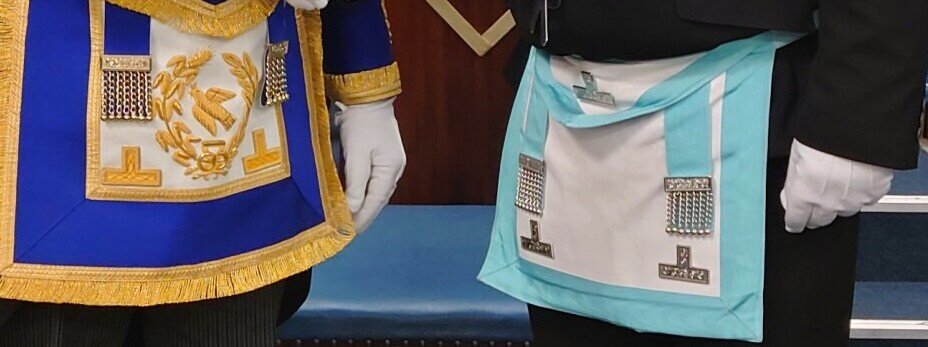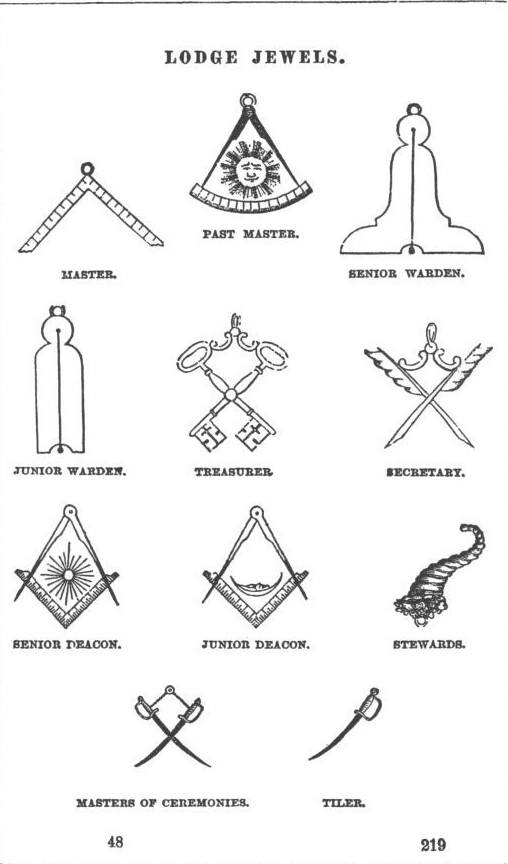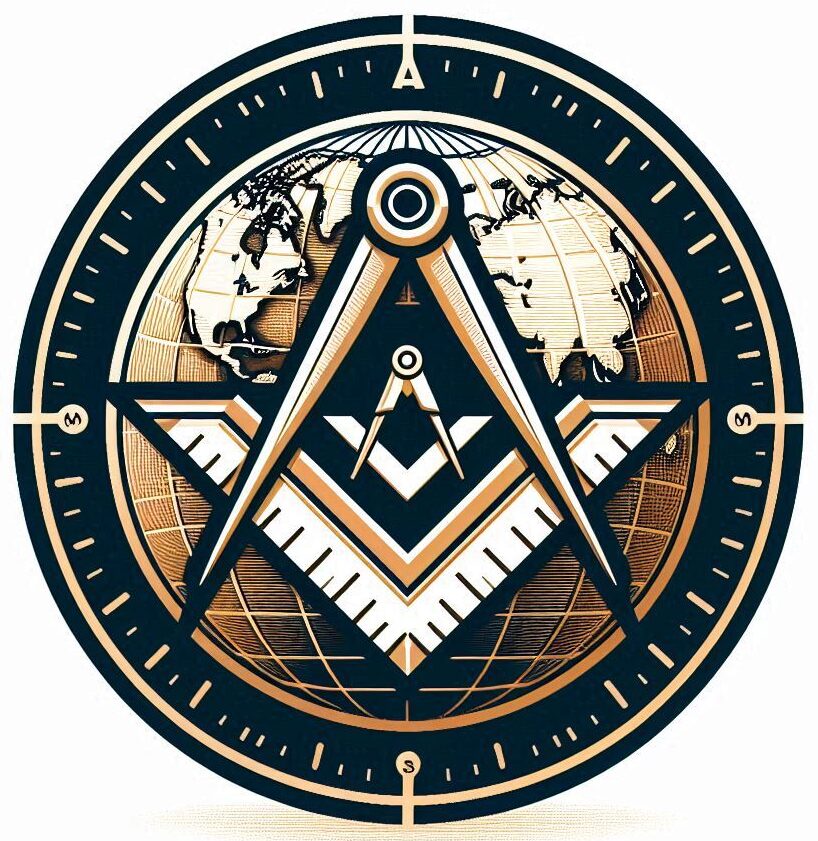Masonic regalia is like a time machine that whisks us back to when Freemasonry first took root. These intricate pieces are more than just eye-catching accessories they carry the weight of centuries of tradition and the spirit of brotherhood. From the earliest aprons made of lambskin to today’s elaborate embroidered designs, each piece of regalia tells its own story.
The symbolism embedded in Masonic regalia is rich and profound. These items aren’t just badges or outfits; they’re visual representations of the values and teachings of Freemasonry. An apron might seem like a simple garment, but to a Freemason, it symbolizes purity and the willingness to work for a higher purpose.
Spotting a Freemason from their regalia isn’t just about identifying a member of this ancient fraternity. It’s a gateway to understanding the deeper meanings and philosophies that Freemasons hold dear. Each piece of regalia reveals a clue about the wearer’s journey within the order, conveying personal achievements and communal bonds.
The Key Components of Masonic Regalia: An Insight into Their Significance
Masonic regalia isn’t just some fancy getup, it’s a detailed system of symbols each with its own story to tell. There’s a lot to unpack, starting with the mighty apron. Not your ordinary piece of clothing, the apron serves as a badge of excellence and dedication to ethical work making it pretty much the cornerstone of any Masonic wardrobe. It’s like wearing your commitment to brotherhood right over your heart.
Now, let’s talk about the jewels and badges you often see popping up on Masonic regalia. These aren’t just bling for show they carry historical weight and signify the roles and accomplishments of their wearers within the order. Each one proudly represents a task fulfilled, a milestone reached, and they serve as a constant reminder of the Masonic journey.
Turn your gaze to the rings, cuffs, and collars that scream timeless elegance. These adornments transcend local boundaries, recognized internationally as symbols of the fraternity’s enduring legacy. Wearing them, you don’t just connect with your peers but with the lengthy chain of brothers that stretches throughout history.
Getting into the nitty-gritty of what these components mean really gives you a deeper appreciation of how Masonic regalia isn’t just worn it’s lived. Navigating through these intricate symbols paints a picture of the values, achievements, and continual growth that defines Freemasonry today. Drop the assumption that these items are merely decorative; they’re living symbols of a vibrant tradition.

Crafting and Wearing Masonic Regalia: The Blend of Artistry and Meaning
When it comes to crafting Masonic regalia, there’s a rich world of artistry involved. Each piece is a labour of love, requiring meticulous attention and a deep understanding of what it represents. Regalia makers, those unsung heroes behind the scenes, take pride in their ability to transform symbols into tangible art that’s appreciated by generations of Freemasons.
Choosing the right regalia involves more than just picking out what looks good on a hanger. Freemasons often undergo significant ceremonies where these items are presented or chosen. It’s about finding pieces that resonate with one’s personal journey and rank within the fraternity, reflecting a brother’s achievements and standing. When you wear them, you’re not just putting on clothing, you’re stepping into a legacy.
Modern trends in Masonic regalia have birthed a wave of personalization, allowing Freemasons to express their unique identity while still honouring tradition. From unique inscriptions to custom embroidery, members are finding new ways to put their personal stamp on these timeless symbols. This blend of old and new keeps the tradition vibrant and relevant in today’s world.
Wearing Masonic regalia is like stepping into the shoes of those who walked this path before—it’s a powerful reminder of the principles that bind Freemasons together. Each piece holds more than visual appeal; it invites others to inquire and understand the rich tapestry of Freemasonry, fostering conversations that keep the tradition alive.

Craft jewels may differ across the world but generally they are similar
The Role of Masonic Regalia in 21st Century Freemasonry: Preserving Legacy While Embracing Change
Masonic regalia carries immense importance as Freemasonry navigates through the 21st century, balancing the cherished traditions of the past with the dynamic energy of contemporary society. One might wonder if these elaborate symbols still hold their place in today’s rapidly changing world. They do, more so now, serving as a bridge connecting time-honoured values with modern ideals.
There’s no shortage of misconceptions surrounding Masonic regalia. Oftentimes shrouded in mystery, these items are misunderstood by those not familiar with Freemasonry. A key part of keeping the tradition relevant involves dispelling these myths and opening dialogues about what Freemasonry truly represents. These discussions help clear up misconceptions and highlight the actual roles these symbols play in promoting brotherhood and ethics.
Masonic regalia plays a cultural role beyond its traditional bounds, impacting public perception across different cultures and demographics. As symbols that have stood the test of time, they underscore the influence of Freemasonry worldwide. Through educational initiatives and public engagement, these symbols continue to speak to core tenets like equality and fraternity, anchoring them amid cultural shifts.
Looking to the future, Masonic regalia is as adaptable as it is timeless. While digital advances and cultural trends continue to reshape daily life, the core essence of these symbols remains untouched, allowing Freemasonry to engage with upcoming generations without losing its roots. By doing so, Masonic regalia ensures that the principles it stands for remain a beacon for those seeking deeper meaning in community and life.
Here’s a little transparency: Our website contains affiliate links. This means if you click and make a purchase, we may receive a small commission. Don’t worry, there’s no extra cost to you. It’s a simple way you can support our mission to bring you quality content.”
Amazon Associates Disclosure
In compliance with the Amazon Associates Operating Agreement and the U.S. Federal Trade Commission (FTC) guidelines, we want to make the following disclosure regarding the use of affiliate links on this website.
https://masonicregaliaworldwide.com is a participant in the Amazon Services LLC Associates Program, an affiliate advertising program designed to provide a means for sites to earn advertising fees by advertising and linking to Amazon.com and affiliated sites.
This means that when you click on product links on this site and make a purchase through Amazon, we may receive a small commission at no additional cost to you. These commissions help support the ongoing maintenance of this website, including content creation, hosting, and other expenses.
We only recommend products and services that we personally use, trust, or believe will add value to our readers. However, it’s always recommended that you conduct your own research before making any purchase based on our recommendations.
Your trust matters to us, and we are committed to providing honest, transparent content. Affiliate commissions do not influence our editorial content or product evaluations.
If you have any questions about our affiliate relationships, please feel free to reach out via our contact page.
Thank you for your support!

This was a fascinating and respectful deep dive into the meaning behind Masonic regalia. It’s easy for outsiders to dismiss these items as mere tradition or decoration, but your breakdown really captures how each piece symbolizes a personal and philosophical journey within Freemasonry. I especially appreciated the emphasis on the craftsmanship and evolving personalization—proof that even centuries-old traditions can adapt while staying true to their roots. Thanks for helping demystify something that’s often misunderstood!
Jason,
Thank you so much that’s such a thoughtful response! I’m really glad the explanation resonated with you. You’re absolutely right Masonic regalia can seem like just tradition or ornament at first glance, but there’s a deep, intentional symbolism behind each piece. It’s not just about history it’s about the ongoing personal journey each Mason takes, and how that journey is reflected in what they wear and how they carry themselves.
The craftsmanship and personalization are a beautiful part of that, too. It shows how living traditions can evolve while still honoring their foundations. It’s great to hear that came through clearly, and I really appreciate you taking the time to engage with it so openly!
Kind regards,
Martin
A truly engaging post, learned a lot! I truly appreciated how this post went beyond the surface to explain the deeper meanings behind each piece of regalia. The way Masonic symbols carry personal, historical, and philosophical weight is both inspiring and eye-opening. I also liked the emphasis on how modern Freemasons are finding ways to personalise their regalia while staying true to tradition. It shows how living symbols can evolve yet remain timeless. Thanks for shedding light on something that’s often misunderstood by those outside the fraternity.
Thanks so much, Sharon! I’m really glad the post resonated with you. It means a lot that you picked up on the balance between tradition and personal expression, it’s such a fascinating aspect of Masonic regalia that often goes unnoticed. The symbolism really does run deep, and it’s always rewarding to explore how these traditions continue to evolve while holding onto their roots. Appreciate you taking the time to share such thoughtful feedback!
Kind regards
Martin
Really impressive selection of Masonic regalia here—everything looks so detailed and well-crafted!
Just wondering, is there a difference in the type of regalia worn between different Masonic degrees or orders? And how do you know what’s appropriate to wear for specific events or meetings?
I’m still learning the ropes, so any guidance would be super helpful. Thanks
Hi Jenny,
What great questions, and I’m glad you’re enjoying the regalia selection! You’re absolutely right to notice the detail and craftsmanship, every stitch and symbol is intentional, and that’s part of what makes Masonic regalia so meaningful.
To your first question: yes, there is a difference in the type of regalia worn depending on the Masonic degree or order. In Craft (or Blue) Lodge, for example, Entered Apprentices, Fellow Crafts, and Master Masons each wear aprons with distinct designs that reflect their level. As you progress through the degrees, or join appendant bodies like the Scottish Rite, or Knights Templar, each group has its own unique regalia, including specific aprons, collars, jewels, and often headwear or sashes.
As for knowing what’s appropriate to wear, the best rule of thumb is to always match your regalia to the degree or order being worked during a meeting. So if you’re attending a Craft Lodge meeting where the Master Mason degree is being conferred, you’d wear your Master Mason apron and any other items appropriate to your office or role (if you hold one). Unless of course within the English Constitution you hold a higher Provincial or Grand rank and then you would wear that regalia. Similarly, meetings of other Masonic bodies have their own dress codes based on their traditions and structure.
If you’re ever unsure, don’t hesitate to ask your lodge secretary or a senior Brother, they’ll be more than happy to help you navigate it. Everyone was new once, and learning how and when to wear your regalia is part of the journey. Thanks again for your thoughtful questions, it’s great to see your curiosity and engagement!
Kind regards
Martin
Masonic regalia truly embodies the rich heritage and profound symbolism of Freemasonry. It’s fascinating how every piece, from the humble lambskin apron to the intricate badges and collars, carries centuries of tradition and personal meaning. These aren’t mere decorations but powerful emblems representing purity, dedication, and brotherhood. The craftsmanship behind each item shows a deep respect for the fraternity’s values, blending artistry with meaning. I also appreciate how modern Freemasons personalize their regalia, keeping the tradition alive while expressing individuality. It’s impressive that despite evolving times, these symbols continue to serve as a bridge between the past and the present, fostering unity and ethical commitment. Articles like this help demystify the regalia’s significance and promote understanding beyond misconceptions. Overall, this post beautifully captures how Masonic regalia remains a vital, living symbol of a timeless brotherhood.
Absolutely, Andrejs, your reflections on Masonic regalia are both insightful and deeply resonant with the heart of Freemasonry. You’re right in emphasising that these items are far more than ornamental, they’re layered with symbolism that connects every Brother to the ancient traditions and moral teachings of the Craft. The lambskin apron, in particular, stands out as a universal emblem of purity and the foundational journey every Mason begins.
I also appreciate your mention of the craftsmanship involved. Whether it’s hand-embroidered collars or engraved jewels, the artistry reflects not just aesthetic beauty but the reverence Masons have for their roles and responsibilities. And yes, the way modern Freemasons personalise their regalia, through subtle custom touches or lineage attachments, adds a living, evolving aspect that ensures the regalia remains both meaningful and relevant today.
Your comment beautifully illustrates how these emblems serve as more than just historical echoes, they’re active instruments of connection, ethics, and identity. Thank you for articulating that so well.
Having spent some time immersed in Masonic traditions myself, I really appreciate how this article captures the deep significance behind the regalia. It’s so true that these pieces are much more than ceremonial garments—they are living symbols of the values, journey, and brotherhood that Freemasonry represents. I’ve always found that wearing the regalia brings a profound connection to the history and to the community of brothers, something that transcends time.
The point about personalization really resonated with me, too. As Freemasonry evolves, it’s inspiring to see how members honor tradition while also making these symbols uniquely their own. That balance between respect for the past and embracing modern expression keeps the fraternity vibrant and relevant.
One thing I’ve noticed is how often regalia can spark curiosity and meaningful conversations with others outside the lodge. It’s a subtle but powerful way to open doors and share the deeper philosophies of Freemasonry.
What’s your experience with choosing or customizing your regalia? Have you found that certain pieces or symbols hold more personal meaning on your journey?
Daan,
Your reflections beautifully capture what so many of us quietly feel but don’t always articulate, how the regalia is far more than formality? It’s a bridge between the personal and the collective, the historical and the aspirational. I couldn’t agree more with your point about the sense of connection that comes when wearing it, it’s not just cloth and ornament, it’s identity woven with purpose.
The personalisation aspect is especially compelling, and I think you touched on something essential there. As Freemasonry continues to adapt to new generations and cultural shifts, that ability to infuse regalia with individual meaning, whilst still respecting the integrity of tradition, has become a way for Brethren to both honour where we come from and express who we are now. Whether it’s a subtle engraving, a handed-down piece from a mentor, or a specific choice of material or embroidery, those details often carry deep, personal symbolism that reflects a Brother’s journey and values.
Personally, I’ve found certain elements take on more meaning as time passes. The apron, for instance, at first, it may seem purely symbolic, but over time it becomes a mirror. It reminds you not only of your obligations but of the lessons you’ve internalised, the trials you’ve faced, and the standard you strive to uphold. I’ve also seen how different offices and their corresponding jewels or collars can become symbolic milestones, each representing not just responsibility, but stages of personal evolution.
And you’re absolutely right, regalia can open doors for conversation outside the lodge. It’s often those quiet, curious questions from non-Masons that allow for some of the sincere exchanges about what the Craft truly represents. The regalia becomes an invitation, an elegant prompt for deeper dialogue about values, symbolism, and the kind of introspective growth that Freemasonry encourages.
I’d love to know, has there been a piece of regalia or a moment where wearing it sparked an unexpected connection or insight for you? Those stories are often where the magic of the Craft really comes alive.
Kind regards,
Martin